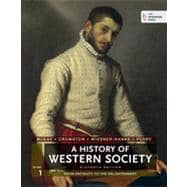Long praised by instructors and students alike for its readability and attention to everyday life, the eleventh edition of A History of Western Society includes even more built-in tools to engage today's students and save instructors time. This edition features a brand-new, comprehensive primary source program in-text and online, expanded chapters devoted to the lives of ordinary people that make the past real and relevant, and the best and latest scholarship throughout. Enhanced with a wealth of digital content—including carefully developed online document assignments for each chapter with auto-graded exercises—the eleventh edition provides easily assignable options for instructors and novel ways for students to master the content. Now integrated with LearningCurve, an adaptive online resource that helps students retain the material and come to class prepared.
To see an example of the new Online Document Assignment from Chapter 14, click here.
What's in the LaunchPad








